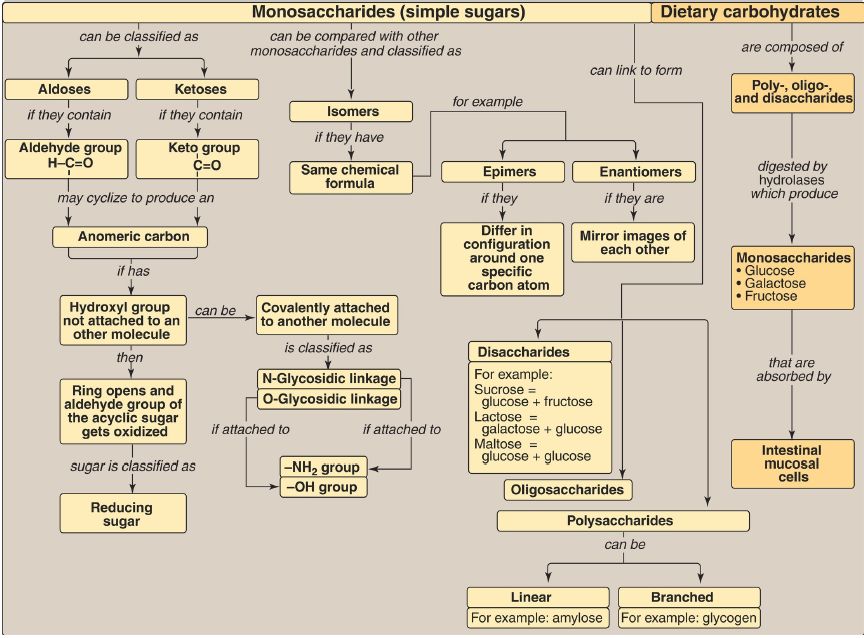
Monosaccharides
 المؤلف:
Denise R. Ferrier
المؤلف:
Denise R. Ferrier
 المصدر:
Lippincott Illustrated Reviews: Biochemistry
المصدر:
Lippincott Illustrated Reviews: Biochemistry
 الجزء والصفحة:
الجزء والصفحة:
 15-9-2021
15-9-2021
 1976
1976
Monosaccharides
Monosaccharides (Fig. 1) containing an aldehyde group are called aldoses, and those with a keto group are called ketoses. Disaccharides, oligosaccharides, and polysaccharides consist of monosaccharides linked by glycosidic bonds. Compounds with the same chemical formula but different structures are called isomers. Two monosaccharide isomers differing in configuration around one specific carbon atom (not the carbonyl carbon) are defined as epimers. In enantiomers (mirror images), the members of the sugar pair are designated as D- and L-isomers.
When the aldehyde group on an acyclic sugar gets oxidized as a chromogenic agent gets reduced, that sugar is a reducing sugar. When a sugar cyclizes, an anomeric carbon is created from the carbonyl carbon of the aldehyde or keto group. The sugar can have two configurations, forming α or β anomers. A sugar can have its anomeric carbon linked to an –NH2 or an –OH group on another structure through N- and O-glycosidic bonds, respectively. Salivary α-amylase initiates digestion of dietary polysaccharides (for example, starch or glycogen), producing oligosaccharides. Pancreatic α-amylase continues the process. The final digestive processes occur at the mucosal lining of the small intestine.
Several disaccharidases (for example, lactase [β-galactosidase], sucrase, isomaltase, and maltase) produce monosaccharides (glucose, galactose, and fructose). These enzymes are transmembrane proteins of the luminal brush border of intestinal mucosal cells (enterocytes). Absorption of the monosaccharides requires specific transporters. If carbohydrate degradation is deficient (as a result of heredity, disease, or drugs that injure the intestinal mucosa), undigested carbohydrate will pass into the large intestine, where it can cause osmotic diarrhea. Bacterial fermentation of the material produces large volumes of carbon dioxide and hydrogen gas, causing abdominal cramps, diarrhea, and flatulence. Lactose intolerance, primarily caused by the age-dependent loss of lactase (adult-type hypolactasia), is by far the most common of these deficiencies.

Figure 1: Key concept map for the classification and structure of monosaccharides and the digestion of dietary carbohydrates.
 الاكثر قراءة في الكيمياء الحيوية
الاكثر قراءة في الكيمياء الحيوية
 اخر الاخبار
اخر الاخبار
اخبار العتبة العباسية المقدسة


